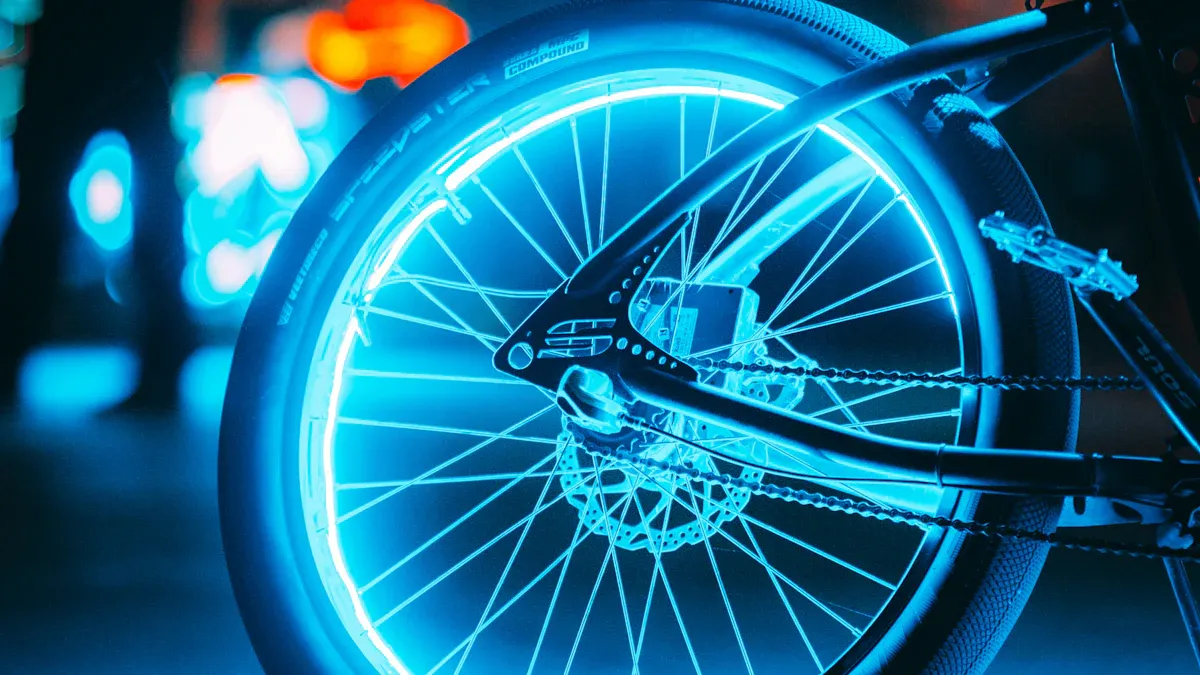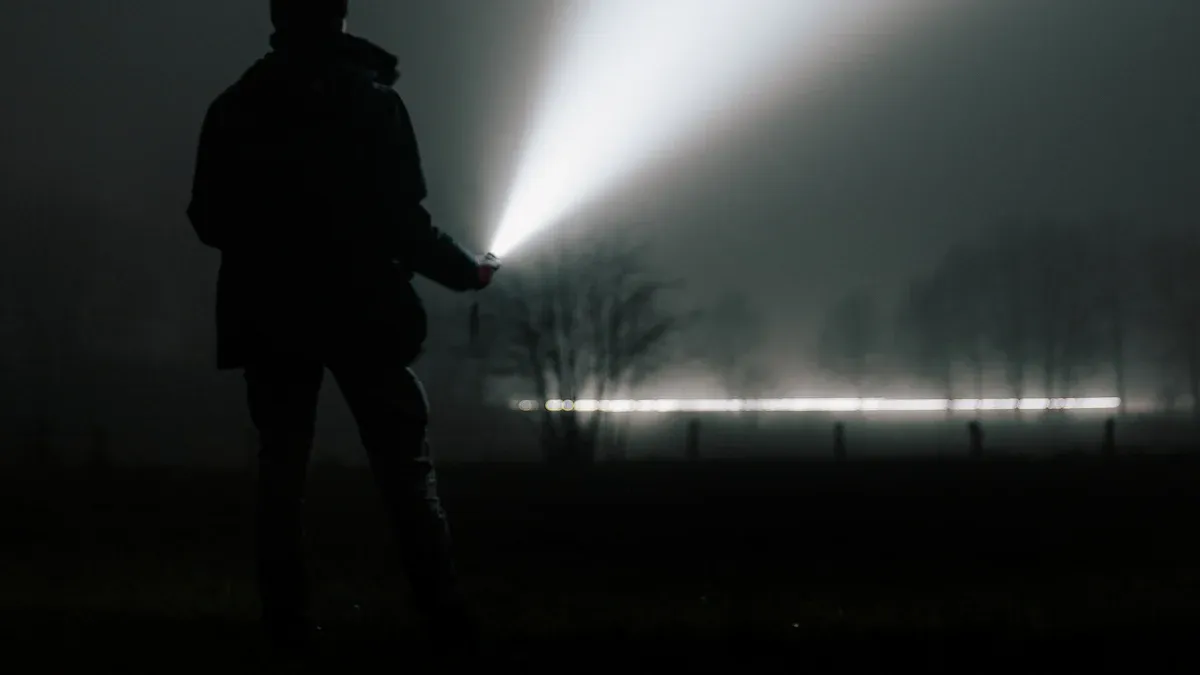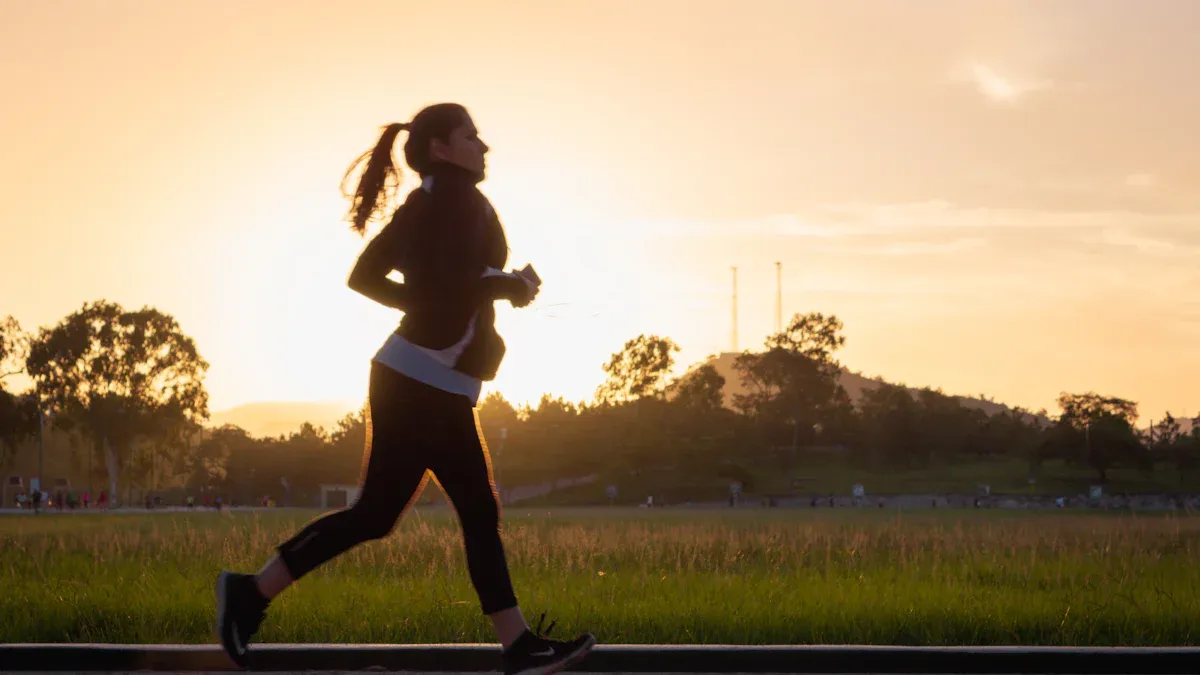The Best Flashlights for Walking, Jogging, and Cycling at Night

Walking, jogging, or cycling at night demands proper visibility to ensure your safety. A reliable flashlight, like the helius flashlight, enhances brightness, helping you navigate uneven terrain and avoid obstacles. Modern designs, including LED technology, improve performance and provide security by deterring threats. Flashlights also offer peace of mind during emergencies, making them indispensable.
Key Takeaways
Pick a flashlight with 200 to 1,000 lumens for walking or jogging. This brightness helps you see well in the dark.
Get a lightweight and waterproof flashlight for comfort and safety. These features keep you focused and easy to spot at night.
Take care of your flashlight by cleaning and storing it correctly. This makes it last longer and work well when needed.
Best Flashlights for Nighttime Activities

Best Flashlights for Walking
When walking at night, you need a flashlight that balances brightness, portability, and durability. A top-rated option offers up to 1,000 lumens, ensuring excellent visibility even in low-light conditions. With a beam distance of 180 meters and a runtime of up to 144 hours, it provides reliable performance for extended use. Its LED bulb and rechargeable lithium-ion battery make it both energy-efficient and eco-friendly.
Key Features:
Smooth zooming beam for focused or wide illumination.
Lightweight design (5.5 oz) for easy handling.
Programmable lighting modes for versatility.
However, specialized charging cords may limit convenience. Despite this, its long throw in spotlight mode makes it one of the best overall choices for nighttime walking.
Best Running Lights for Jogging at Night
Jogging at night requires the best running lights that combine brightness, durability, and comfort. Look for flashlights with 200 to 1,000 lumens to illuminate your path effectively. Rechargeable batteries ensure you won’t run out of power mid-run. Weatherproof and impact-resistant materials, such as aluminum, enhance durability. Multiple lighting modes, including strobe and SOS, add versatility for different scenarios.
Tip: Choose lightweight, waterproof options to avoid discomfort during your jog.
Top Flashlights for Cycling
Cyclists need powerful, waterproof flashlights to ensure visibility and safety. Models with high lumens and adjustable beams are ideal for illuminating trails or roads. Rechargeable options with long runtimes are perfect for extended rides. Look for durable designs that withstand vibrations and weather conditions.
Multi-Purpose Options for All Activities
If you engage in multiple nighttime activities, consider multi-purpose flashlights. For example, the Armytek Prime C2 Pro Magnet USB Warm delivers up to 2,230 lumens and a runtime of 6.5 months, making it suitable for walking, cycling, and camping. Other models, like the Armytek Elf C1 Micro USB, offer compact designs and versatile features for jogging or household repairs.
Flashlight Model | Light Output | Beam Distance | Runtime | Features |
|---|---|---|---|---|
Armytek Prime C2 Pro Magnet USB Warm | Up to 2230 lumens | Up to 121 meters | Up to 6.5 months | Suitable for walking, camping, cycling, and car service. |
Armytek Elf C1 Micro USB (warm light) | Up to 930 lumens | Up to 102 meters | Up to 2 months | Great for evening jogging, cycling, camping, and minor household repairs. |
These multi-purpose options provide the best overall performance for various nighttime activities.
Comparison of Flashlights
Key Features (Lumens, Weight, Battery Life)
When comparing flashlights for nighttime activities, you should focus on three critical features: lumens, weight, and battery life. Lumens measure the brightness of a flashlight. For walking or jogging, 200 to 1,000 lumens provide sufficient illumination. Cycling or multi-purpose flashlights often require higher lumens for enhanced visibility. A flashlight with adjustable brightness levels offers flexibility for different environments.
Weight plays a significant role in comfort. The best lightweight options weigh less than 6 ounces, ensuring ease of use during extended activities. Heavier models may offer more features but can cause fatigue.
Battery life determines how long your flashlight will last. Rechargeable flashlights are ideal for frequent use. They save money and reduce waste compared to disposable batteries. Look for models with runtimes exceeding 10 hours for the best overnight performance. Waterproof designs also ensure durability in wet conditions.
Price vs. Performance
Finding the best affordable flashlight requires balancing cost and features. High-end models often deliver the best brightest output, longer runtimes, and advanced features like strobe modes or waterproof construction. However, budget-friendly options can still meet your needs if you prioritize essential features like brightness and rechargeable batteries.
A comparison of price and performance reveals that mid-range flashlights often provide the best value. These models combine durability, waterproof capabilities, and sufficient lumens for most nighttime activities. Investing in a reliable flashlight ensures safety and visibility without overspending.
Choosing the Right Flashlight
Brightness and Beam Distance
When selecting a flashlight for nighttime activities, brightness and beam distance are critical factors. Brightness, measured in lumens, determines how well you can see in the dark. For example, flashlights with 200–1,000 lumens are ideal for jogging or walking, while cycling or extreme conditions may require up to 7,000 lumens. Beam distance, on the other hand, measures how far the light reaches. A flashlight with a beam distance of 100–200 meters works well for most outdoor activities.
Tip: Consider your environment and activity. For visibility for runners, a flashlight with adjustable brightness and beam distance ensures optimal performance.
Lumens | Distance | Best For |
|---|---|---|
1–250 | Up to 80 m | Everyday use |
400–1,000 | Up to 200 m | Hiking, jogging |
7,000+ | Up to 700 m | Emergency rescue |
Comfort and Fit (Headlamps, Clip-ons, etc.)
Comfort is essential when choosing a flashlight. The best headlamps offer hands-free convenience, making them perfect for jogging or cycling. Clip-on flashlights provide flexibility and are lightweight, ensuring they don’t hinder your movement. Look for ergonomic designs that reduce strain during extended use.
Note: The best lightweight options weigh less than 6 ounces, ensuring maximum comfort for long activities.
Durability and Weather Resistance
Durability ensures your flashlight withstands outdoor conditions. High-quality materials like aluminum or reinforced plastic enhance strength and wear resistance. Waterproof designs with IP ratings, such as IP67, protect against water and dust. Rubberized seals around the battery compartment further improve weather resistance.
Pro Tip: Choose a flashlight tested for impact resistance under the ANSI/NEMA FL-1 standard to ensure it survives accidental drops.
Battery Type and Runtime
Battery type affects performance and convenience. Rechargeable batteries, such as Li-ion, offer long-term cost savings and eco-friendliness. Alkaline batteries are affordable but have shorter runtimes. For the best overnight performance, select a flashlight with a runtime exceeding 10 hours.
Battery Type | Advantages | Disadvantages |
|---|---|---|
Alkaline | Affordable, widely available | Short runtime, low performance |
Rechargeable Li-ion | Long-lasting, reusable | Requires specialized chargers |
Additional Features (Strobe Mode, Adjustable Beam)
Modern flashlights include features like strobe mode for emergencies and adjustable beams for versatility. These features enhance visibility and safety during nighttime activities. The best headlamps often combine these features with waterproof designs, making them suitable for various conditions.
Tips for Using Flashlights Effectively

Adjusting Brightness for Visibility
Adjusting the brightness of your flashlight is essential for maintaining optimal visibility during nighttime activities. A flashlight with adjustable lumens allows you to adapt to different environments. For example, lower brightness settings work well in urban areas with streetlights, while higher lumens are necessary for darker trails or rural roads. Using a flashlight with a wide beam can improve visibility by illuminating a larger area. This feature is particularly useful when walking or jogging at night.
Tip: Avoid using maximum brightness continuously to conserve battery life, especially if your flashlight is rechargeable.
Proper Placement for Safety
Proper placement of your flashlight enhances safety and ensures you remain visible to others. For hands-free convenience, headlamps are an excellent choice. They provide consistent illumination without requiring you to hold the light. Clip-on flashlights can be attached to your running gear, offering flexibility and ease of use. Cyclists should mount their flashlights securely on handlebars to maintain focus on the road.
Pro Tip: Use a waterproof flashlight to ensure reliable performance in wet conditions.
Safety Tips for Running at Night
Running at night requires extra precautions to ensure your safety. Wear reflective running gear to increase visibility and avoid dark clothing. Choose a safe route and inform someone about your plans before heading out. Carry a phone for emergencies. A headlamp is a lightweight and effective light source, while a flashing red light on your back ensures visibility from both the front and rear.
Reminder: Attach a waterproof flashlight to your running gear to stay prepared for unexpected weather conditions.
Maintenance and Care
Cleaning and Storing Your Flashlight
Proper cleaning and storage ensure your flashlight remains reliable for nighttime activities. Follow these steps to maintain its longevity:
Wipe the exterior with a clean, dry cloth every six months to remove dirt and debris.
Inspect the battery contacts for corrosion and clean them if necessary.
Test the switch and light modes to confirm they work correctly.
When storing your flashlight, remove the batteries to prevent leakage. Keep it in a cool, dry place to avoid damage from moisture or extreme temperatures. Use a protective case for added safety, especially for waterproof models.
Tip: Avoid storing your flashlight in direct sunlight or near heat sources, as this can degrade its components.
Extending Battery Life
Maximizing battery life ensures your flashlight performs optimally during nighttime use. Here are some effective techniques:
Switch to rechargeable batteries for consistent performance and reduced waste.
Avoid overcharging rechargeable batteries to preserve their lifespan.
Store batteries in a cool, dry environment to prevent degradation.
Use energy-efficient LED flashlights, which consume less power while delivering high lumens.
Regular maintenance also helps extend battery life. Clean the flashlight to remove dirt, replace O-rings to maintain waterproofing, and lubricate moving parts as needed.
Pro Tip: Use lower brightness settings when possible to conserve battery power during extended use.
Troubleshooting Issues
Flashlight issues can arise unexpectedly, but most problems are easy to resolve. If your flashlight won’t turn on, ensure the head or tail is fully tightened. Clean the contact points to remove dirt or corrosion. If the issue persists, try using a different battery.
For flashlights that only function in low or strobe mode, check the battery charge and replace it if necessary. Rechargeable models may fail to charge due to damaged cables or ports, so inspect these components carefully.
Reminder: Regularly test your flashlight to identify and address potential issues before your next night outing.
Choosing the right flashlight ensures safety and enhances your experience during night activities. Prioritize brightness, durability, and user-friendly features for optimal performance. A high-quality flashlight offers reliable illumination, withstands tough conditions, and provides advanced modes for emergencies. Investing in one guarantees visibility and peace of mind, whether you're walking, jogging, or cycling.
FAQ
How do you choose the right flashlight for nighttime activities?
Focus on brightness, beam distance, and comfort. Select a flashlight with adjustable settings and weather resistance to ensure safety during night activities.
What is the best way to maintain flashlight performance?
Clean it regularly, store it in a dry place, and use rechargeable batteries. These steps help extend its lifespan and ensure reliable performance during night use.
Can you use a flashlight in rainy conditions?
Yes, waterproof flashlights with IP ratings like IP67 work well in rain. They ensure durability and consistent performance during wet night outings.
See Also
Essential Tips for Selecting the Best Hiking Flashlight
SF1 Camping Flashlight: Brighten Your Outdoor Experiences
How to Select the Ideal Flashlight for Daily Use
